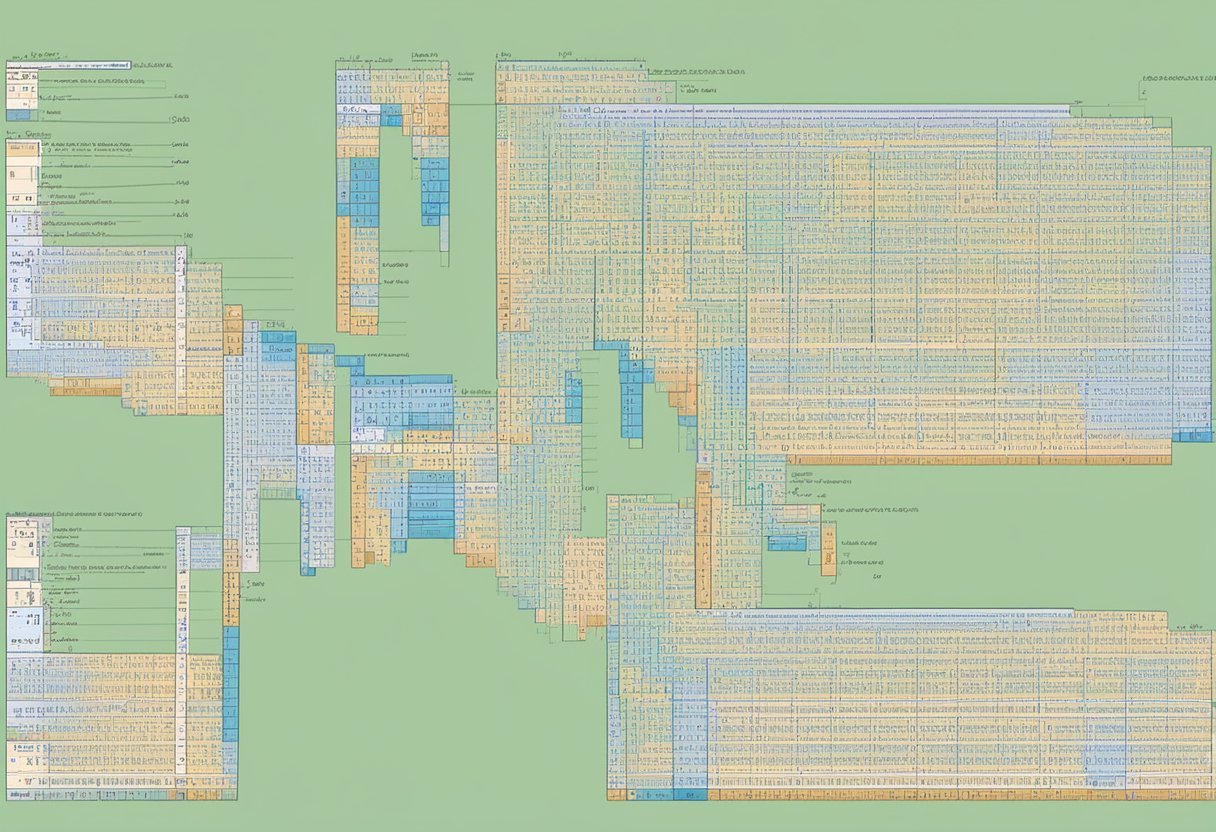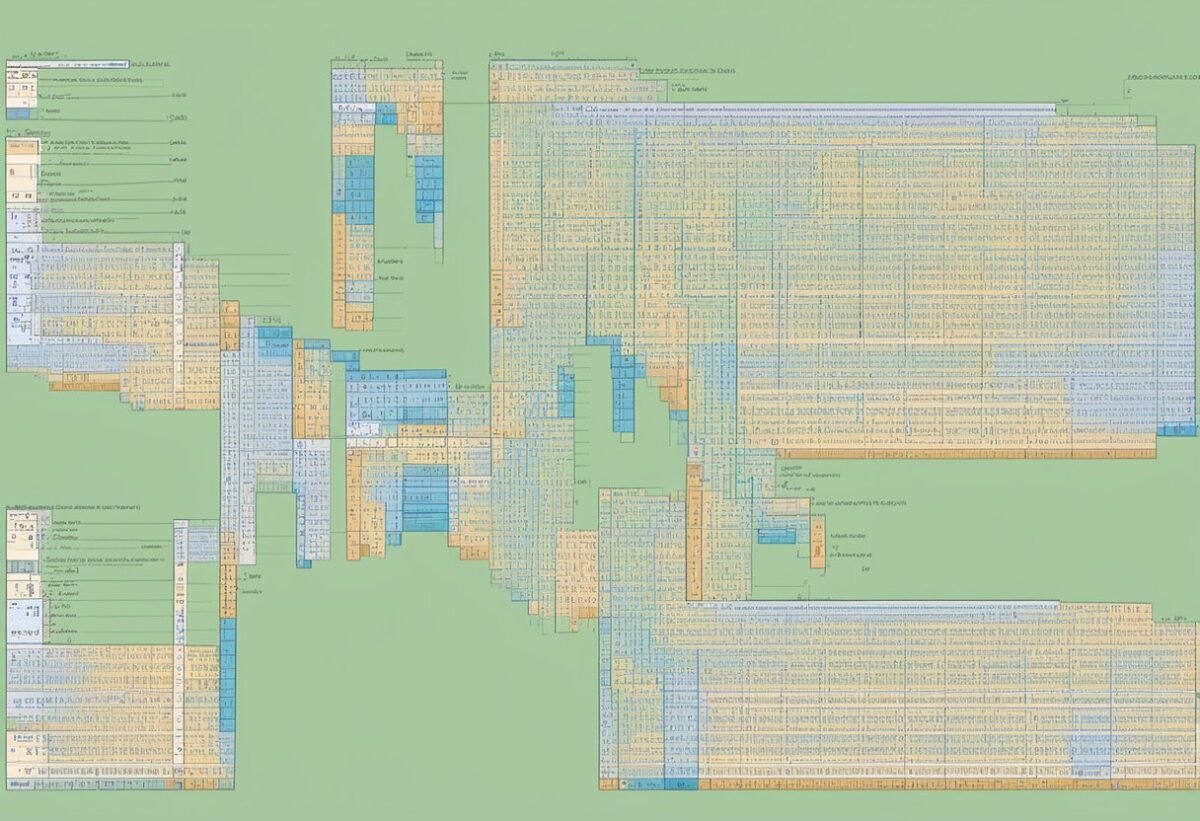Understanding Word Ladders
A word ladder is a puzzle that starts with a word and aims to reach another word by changing one letter at a time. Each step must create a valid dictionary word. This challenge, invented by Lewis Carroll, encourages logical and systematic thinking.
For example, transforming “FOOL” to “SAGE” in gradual steps like “FOOL” → “FOUL” → “FOIL” → “FAIL” → “SALE” → “SAGE”.
Rules of Word Ladders:
- Each step changes a single letter.
- The word must always be a valid word.
- The words must be of the same length, often four-letter words.
The key to solving word ladders is understanding that each word can be thought of as a node in a graph. An edge exists between nodes if they differ by exactly one letter.
One efficient way to generate potential words is using wildcards. By replacing each letter with a wildcard, words differing by one letter can be found. For example, the word “FOOL” can use wildcards as “OOL”, “F_OL”, “FO_L”, and “FOO“.
Applications:
- Developing coding algorithms.
- Enhancing vocabulary and language skills.
Python Primer for Implementing Algorithms

Python is a popular choice for coding algorithms. Its simple syntax makes it easy to learn, even for beginners. Python’s built-in libraries offer powerful tools for handling complex tasks.
When implementing algorithms in Python, data structures like lists and dictionaries are essential. Lists allow storing sequences of items, while dictionaries help in mapping keys to values efficiently.
example_list = [1, 2, 3]
example_dict = {'key1': 'value1', 'key2': 'value2'}
Python’s control structures, like loops and conditionals, help in executing algorithms’ logic. For instance, for loops can iterate over each item in a list to apply a function or condition.
If an algorithm requires frequent access to external modules, such as mathematical operations, Python’s import statement makes these resources easily available.
import math
result = math.sqrt(25)
Functions in Python promote code reusability and organization. They allow encapsulating parts of an algorithm in a single callable block, enhancing clarity and maintenance.
def add_numbers(num1, num2):
return num1 + num2
Python’s object-oriented features allow defining custom data types and operations, which can be particularly useful when your algorithm needs to manage complex structures or behaviors.
Parallelism can improve the performance of algorithms, especially when processing large datasets. Python’s asyncio library helps manage asynchronous operations efficiently.
Algorithm Basics and Complexity
In a word ladder problem, the main goal is to transform a start word into a target word. Each step involves changing one letter at a time, and the resulting word must exist in the given dictionary.
The word ladder algorithm is often solved using a Breadth-First Search (BFS). This ensures the shortest path by exploring all possible paths step by step.
Steps of the Algorithm:
- Initialize: Use a queue to store the current word and its transformation path.
- Explore Neighbors: Change one character at a time to find neighboring words.
- Check Dictionary: Ensure each new word exists in the dictionary.
- Repeat: Continue until the target word is reached.
Time Complexity:
The time complexity of a word ladder can be O(N * M * 26), where:
- N is the number of entries in the dictionary.
- M is the length of each word.
This algorithm checks each possible single-letter transformation using 26 letters of the alphabet, making computations manageable even for larger datasets. For a detailed explanation of the algorithm, refer to this in-depth explanation of Word Ladder.
Data Structures in Python
Python offers a rich variety of data structures designed to handle various tasks efficiently. Sets are used for storing unique elements, while queues and deques are essential for manipulating elements in a particular order.
Working with Sets
A set in Python is an unordered collection of unique elements. It is ideal for situations where you need to eliminate duplicates or perform mathematical operations like unions, intersections, and differences. Sets are declared using curly braces {} or the set() function.
my_set = {1, 2, 3, 4}
another_set = set([3, 4, 5])
Sets support operations like add, remove, and clear. They are also highly efficient for membership testing:
- Add:
.add(element) - Remove:
.remove(element) - Membership Test:
element in my_set
Understanding the efficiency of sets can greatly optimize code involving unique collections of items.
Queue and Deque in Python
Queues in Python follow the First-In-First-Out (FIFO) principle, making them suitable for scheduling and task management tasks. You can implement queues using lists, but it is more efficient to use the queue module. The deque class from the collections module supports operations from both ends of the queue, essentially making it a more versatile option.
from collections import deque
my_queue = deque(["task1", "task2"])
my_queue.append("task3") # Add to the right end
my_queue.popleft() # Remove from the left end
Operations on a deque have an average constant time complexity, making it an excellent choice for high-performance tasks where insertion and deletion operations are frequent. This makes deque useful in applications such as task schedulers or handling page requests in web services.
Graph Theory Essentials
Graph theory is a fundamental aspect of computer science that deals with vertices and edges. Key components include the representation of graphs through matrices and understanding the efficiency of sparse matrices in processing data.
Understanding Vertices and Edges
In graph theory, a graph is composed of vertices (or nodes) and edges (connections between nodes). Vertices are the individual points, while edges are the lines that connect them. Each edge illustrates a relationship between two vertices. There are different types of graphs, such as undirected graphs, where edges have no direction, and directed graphs, where edges point from one vertex to another. Understanding these basic elements forms the foundation for more complex graph operations, such as searching and pathfinding.
Exploring Adjacency Matrices
An adjacency matrix is a way to represent a graph using a two-dimensional array where rows and columns represent vertices. If an edge exists between two vertices, the corresponding cell in the matrix is marked, often with a binary entry like 0 or 1. This method allows for efficient checking of the relationship between any two vertices. Despite being easy to implement, adjacency matrices can require significant memory, especially in graphs with many vertices but few edges, leading to large matrices with mostly empty cells.
The Concept of a Sparse Matrix
A sparse matrix is an optimized form of an adjacency matrix, where only non-zero elements are stored. This is beneficial for graphs that have many vertices but relatively few edges, as storing only the existing connections conserves memory. Sparse matrices are particularly useful in applications where performance is crucial, like in large network analyses or simulations. Sparse matrix representation reduces unnecessary storage of zero values, thereby increasing computational efficiency.
Implementing the Word Ladder Problem
The Word Ladder problem involves transforming a start word into a target word by changing one letter at a time, with each intermediate step forming a valid word. A common approach to solve this is using Breadth-First Search (BFS), which finds the shortest transformation sequence efficiently by exploring all neighbors at the present depth before moving on.
Problem Definition
The goal is to convert one word into another by altering one letter in each step. For the transformation to be valid, each changed word must exist in a predefined word list. For example, transforming “FOOL” to “SAGE” may involve steps such as “FOOL” → “POOL” → “POLL” → “PALE” → “SALE” → “SAGE”.
The words should differ by exactly one letter at each step. This ensures that each intermediate word and the final target word are valid transformations. The problem is solved when the target word is created from the start word using successive valid transformations. This makes it a puzzle focused on word manipulation and logical deduction.
BFS Traversal Strategy
A Breadth-First Search (BFS) strategy is often used to solve the Word Ladder problem because it efficiently finds the shortest path. It starts with the start word and adds it to a queue. At each state, all words that are one letter away from the current word are checked, and valid words are added to the queue.
Each level of BFS represents a step in transforming one word into another. When the target word is removed from the queue, the number of levels corresponds to the shortest transformation sequence length. This BFS method explores all possible transformations at each level before moving deeper, ensuring the shortest path is found.
Optimizing the Word Ladder Solver
To improve the performance of a Word Ladder solver, employing a breadth-first search (BFS) is essential. BFS efficiently finds the shortest path by exploring all possible words one letter different at each step.
Another key strategy is bidirectional search. Initiating the search from both the start word and the end word reduces the search space, as mentioned in this LeetCode discussion. Switching sets when one becomes smaller can further optimize the process.
Preprocessing the word list to create a graph where nodes are words and edges represent one-letter transitions can speed up searches. Use dictionaries or hash maps to quickly find neighbors of a word. This graph structure can save time during execution.
Consider using heuristic functions to guide the search process. Although typically used in other search algorithms, heuristics can sometimes help focus the BFS more effectively toward the target word.
Finally, keep the data structures efficient. Use a queue for BFS, and implement sets to track visited words, which reduces redundant work. Monitoring memory usage by pruning steps that don’t contribute to finding the shortest path can also help.
Handling Edge Cases in Algorithm Design

In algorithm design, addressing edge cases is vital. These are scenarios that occur outside of normal operating conditions, such as very large inputs or unexpected user behavior.
They can reveal hidden bugs and ensure the algorithm’s reliability.
Identifying edge cases requires thorough testing. This includes inputs at the limits of expected ranges, or even beyond.
Designing tests for these scenarios can prevent failures in real-world applications.
Algorithms need to be flexible enough to handle these situations gracefully. One approach is to add specific conditional checks within the code.
These checks detect unusual inputs early and decide the best course of action.
Testing frameworks like pytest are useful tools for validating algorithm performance under various edge cases. By running tests regularly, developers can catch potential issues before deployment.
When writing code, clear documentation helps future developers understand how edge cases are managed. This improves code maintainability and aids in debugging.
Using well-defined data structures and algorithms can also help in managing edge cases. Efficient structures prevent performance degradation when handling unusual inputs.
Code Repositories and Version Control

Code repositories are essential for managing and storing software projects. A repository acts as a directory for project files, including code, documentation, and other assets.
It keeps track of all changes, making collaboration smoother among developers. Repositories are commonly used on platforms like GitHub, allowing multiple people to work on the same project without conflict.
Version control systems (VCS) like Git are crucial in modern software development. They help track changes to the codebase and allow developers to revert to previous versions if necessary.
This system enables development teams to work concurrently on various parts of a project. VCS also aids in maintaining a history of modifications, which is useful for debugging and understanding the evolution of the project.
A typical workflow with version control starts with cloning a repository. Developers make their changes locally before pushing them back.
This push updates the central repository. Regularly, changes might be merged from team members, a common element of source control in system design.
Effective version control helps avoid issues like code conflicts and overwritten work. It automates tracking, enabling transparent and reliable project management.
This is a key skill for developers, ensuring that projects progress smoothly while maintaining a high standard of code quality.
Some popular platforms that offer these features include Git, Mercurial, and Subversion. For version control tips, users can refer to Git skills for 2024.
These tools ensure that developers can manage complex projects efficiently.
Creating and Using a Dictionary for Word Ladders
In constructing a word ladder in Python, a dictionary is a crucial tool. This approach involves grouping words into buckets based on their similarity and employing wildcards to navigate from one word to another efficiently.
Bucketing Similar Words
Bucketing words means grouping them based on common letter patterns. Each bucket holds words that are identical except for one letter. For example, if the word list includes “cat”, “bat”, and “hat”, these words would belong to the same bucket.
The process starts by creating a template for each word, with one letter replaced by an underscore. Words matching the same template go into the same bucket.
This method makes it easier to find words that are just one letter different from a given word.
Using a dictionary to store these buckets is efficient. Each entry in the dictionary has a template as the key, and a list of words as the value. This allows fast lookup and builds the foundation for navigating from one word to another in the ladder.
Solving with Wildcards
Wildcards help in transitioning between words in a word ladder. By thinking of these transitions as nodes in a graph, a wildcard represents possible connections between nodes.
To leverage wildcards, each word is rewritten multiple times, with each letter substituted with an underscore one at a time. For example, “dog” can be written as “og”, “d_g”, and “do“.
The dictionary keys created with these patterns are used to find all neighboring words in the ladder.
This strategy allows for quick searching and ensures only valid words are included.
Applying wildcards effectively helps in reducing the complexity involved in finding the shortest path from the start word to the target word in a word ladder. It ensures each step in the ladder is meaningful and keeps the search focused.
Finding the Shortest Path in a Word Ladder
A word ladder is a puzzle where players transform one word into another by changing a single letter at a time. Each step must form a valid word, and the goal is to find the shortest path from the start word to the target word.
To solve this using Python, a breadth-first search (BFS) approach is effective. This method explores all possible word transformations layer by layer, ensuring the shortest path is found.
Start with the initial word and explore all words one character away.
Using a queue to track the current word and its transformation distance, one can systematically find the target word. Each valid transformation is enqueued along with its distance from the start word.
Here’s a simplified approach:
- Enqueue the start word.
- Track visited words to avoid cycles.
- For each word, change each letter and check if it forms a valid word.
- If the target word is reached, record the distance.
For efficiency, words can be preprocessed into a graph structure. Each word links to other words one letter apart, reducing repeated lookups.
Example Table:
| Start Word | End Word | Steps |
|---|---|---|
| “hit” | “cog” | hit -> hot -> dot -> dog -> cog |
For programming implementation, the GeeksforGeeks article explains using Python to build and traverse the ladder graph.
This approach relies on a dictionary file to search for valid intermediate words, ensuring that all words created during transformation exist in the word list.
Advanced Topics in Graph Theory
Understanding advanced graph theory topics, such as graph isomorphism and topological sorting, is key for complex applications like implementing algorithms in Python. These concepts help in identifying graph structures and arranging nodes based on dependencies.
Graph Isomorphism
Graph isomorphism involves determining whether two graphs are structurally identical. This means that there is a one-to-one mapping of vertices between two graphs, maintaining adjacency relations.
This concept is crucial in many fields, including chemistry and computer vision, where recognizing identical structures is necessary.
The challenge of determining graph isomorphism comes from its computational complexity. Though no efficient algorithm is universally accepted, advancements in Python programming aid in creating solutions for specific cases.
Libraries like NetworkX can be utilized to perform isomorphism checks, helping developers manage and manipulate graph data structures effectively.
Topological Sorting and Word Ladders
Topological sorting focuses on arranging nodes in a directed graph such that for every directed edge from node A to node B, node A appears before node B. This is vital in scheduling tasks, organizing prerequisite sequences, or managing dependencies in coding projects.
When applying topological sorting in the context of word ladders, it involves ensuring that each transformation of a word occurs in a sequence that maintains valid transitions.
Implementations can take advantage of algorithms like Kahn’s algorithm or depth-first search to achieve this efficient ordering. These methods help optimize solutions in practical applications, ensuring transformations adhere to specified rules or pathways.
Frequently Asked Questions
This section explores how to implement word ladders in Python, including the best algorithmic approaches, common challenges, and practical examples. It aims to provide clear guidance for creating efficient solutions to the word ladder puzzle.
How can you implement a word ladder solver using Python?
To implement a word ladder solver in Python, you can use breadth-first search (BFS). This approach systematically explores each word, changing one letter at a time to form a valid transformation sequence.
Utilize Python’s set and queue data structures to manage word lists and processing order efficiently.
What are the key steps involved in solving a word ladder puzzle programmatically?
First, represent the problem using a graph where words are nodes and edges connect words differing by one letter. Initiate a BFS starting from the initial word.
Track each transformation to ensure words are only transformed once. This method helps find the shortest path from the start to the target word.
Can you provide an example of a word ladder solution in Python?
An example of a word ladder solution includes initializing the search with a queue containing the start word. As each word is dequeued, generate all possible valid transformations.
If a transformation matches the target word, the solution path is found. This solution can be structured using a loop to iterate over each character position in the word.
What algorithmic approach is best suited to solve a word ladder problem?
Breadth-first search is the most effective algorithm for solving word ladder problems. It explores nodes layer by layer, ensuring that the shortest path is found upon reaching the target word.
This systematic and level-wise exploration minimizes search time and maximizes efficiency.
How is the word ladder transformation challenge typically structured in Python?
The challenge is typically structured as a graph traversal problem. Each word is a node connected to others one letter away.
Using Python’s data structures like sets for visited words and dequeues for BFS queues can help keep track of and optimize the transformation process.
What are some common pitfalls to avoid when programming a word ladder solver?
When programming a word ladder solver, avoid re-processing words by marking them as visited. This prevents loops and inefficient searches.
Ensure the word list is pre-processed to exclude invalid words.
Avoid using complex data structures where simpler ones can achieve the same results more efficiently, thus improving clarity and performance.
